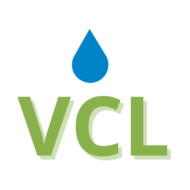Technology Summary
Market Sectors
Key market sectors identified with applicability for technology implementation include:
MINING
Waste waters (pit water, acid mine drainage, tailings, process plants)
NUCLEAR
Wastewaters (in-situ leach plumes, tailings, process plants)
CHEMICAL
Industry wastewaters
(coal-to-liquids plants)
PETROCHEMICAL & ELECTROPLATING
Plant & industry waste waters
TEXTILE
Industry waste waters
POTABLE
Water purification plants
The Virtual Curtain (VC) technology involves the synthesis and application of hydrotalcite’s layered double hydroxide mineral, primarily composed of magnesium and aluminium. Hydrotalcite during their formation can accommodate into their structure a range of contaminants and in so doing constitutes a unique solution to water and waste water management.
VCL is seeking to provide long-term solutions for the remediation of contaminated above and below surface acidic and contaminated geochemically-complex waste waters from mining and a range of industries to a quality suitable for reuse or for discharge into the natural environment. VCL has been working with CSIRO on this solution since 2008 with projects now in Australia, USA and China.
The objective of the VC technology is to treat and remediate contaminated natural and industrial wastewater in both below-surface and above-surface environments by neutralising acidic plumes, removing a wide range of toxic contaminants and minimising surface / sub-surface disturbance.
The safe and cost-effective treatment and remediation of contaminated natural and industrial wastewater constitutes an omnipresent challenge, nationally and internationally. Many mining and industrial processes generate wastewater that contains a variety of contaminants, such as metals and metalloids. These must be removed to ensure that the wastewater is suitable for reuse or safe discharge to the environment, however, mining wastewater treatment processes have traditionally been difficult due to the large range of different contaminants present, requiring a number of complex steps.
The VC technology constitutes a major advancement in the treatment of mining and industrial waste waters for a number of reasons:
– the technology allows often one step, broad spectrum removal of a variety of potentially hazardous or toxic contaminants including metals, metalloids, foulants, organics and radionuclides;
– the captured contaminants may be further stabilised for long-term disposal, or where significant value exists, recovered to offset remediation costs and reduce the final stored contaminant inventory;
– the technology is inherently simple in its application and thus may be readily retro fitted or applied to existing operations as has been demonstrated in major applications in Australia and China.
The VC technology is particularly relevant because emerging global markets (and in particular China where there has been a considerable focus due to the scale of projects and the Ten Measures environmental policy) are adopting increasingly strict environmental management legislation which impacts:
– existing/abandoned mine sites with acidic drainage / leakage, including mining waste heaps with oxidising sulphide minerals (such as pyrite);
– in-situ uranium leach mine sites (ISL), including leakage from thousands of cold war-era uranium injection / extraction bores in Europe and the US;
– current mine closure policies are becoming increasingly rigid with requirement for long-term solutions for leakage of toxic by-products; and
– associated contaminants, in particular post mining, chemical plant and / or oil field aquifer contamination.
Patents
- International Patent Application PCT/AU2007/00042 (Remediation Of Groundwater), dated 4 April 2007; and subsequent national/regional applications and patents based thereon
- International Patent Application PCT/AU2010/000317 (Treatment And Remediation Of Natural Waste Water) dated 19 March 2010; and subsequent national / regional applications and patents based thereon
- International Patent Application PCT/AU2015/050175 (A Process For Treatment And Remediation Of Water) dated 15 April 2015; and subsequent national / regional applications and patents based thereon
- International Patent Application PCT/AU2018/050967 (Water Treatment Process) dated 6 September 2018; and subsequent national / regional applications and patents based thereon
- International Patent Application PCT/AU2016/050282 (Selective separation of elements or commodities of interest in aqueous streams) dated 15 April 2016; and subsequent national / regional applications and patents based thereon.
